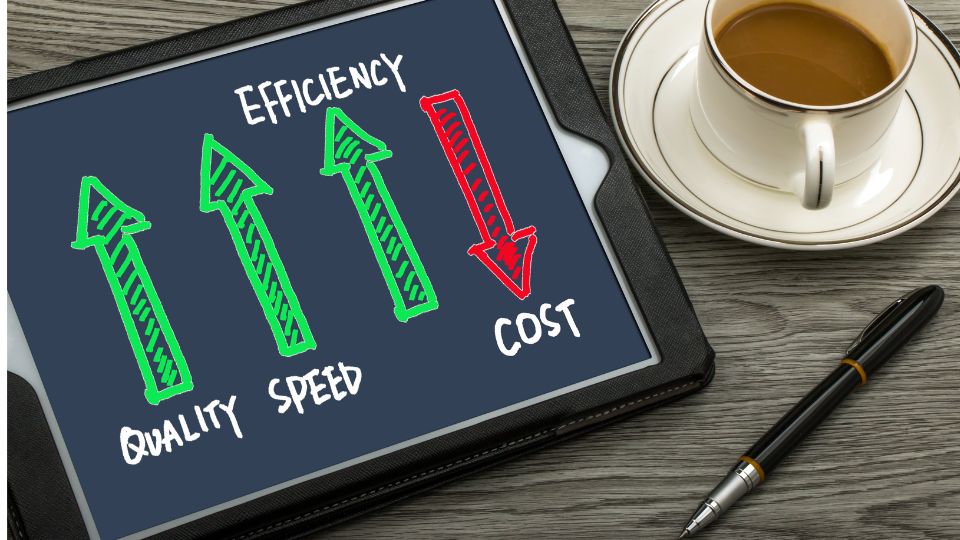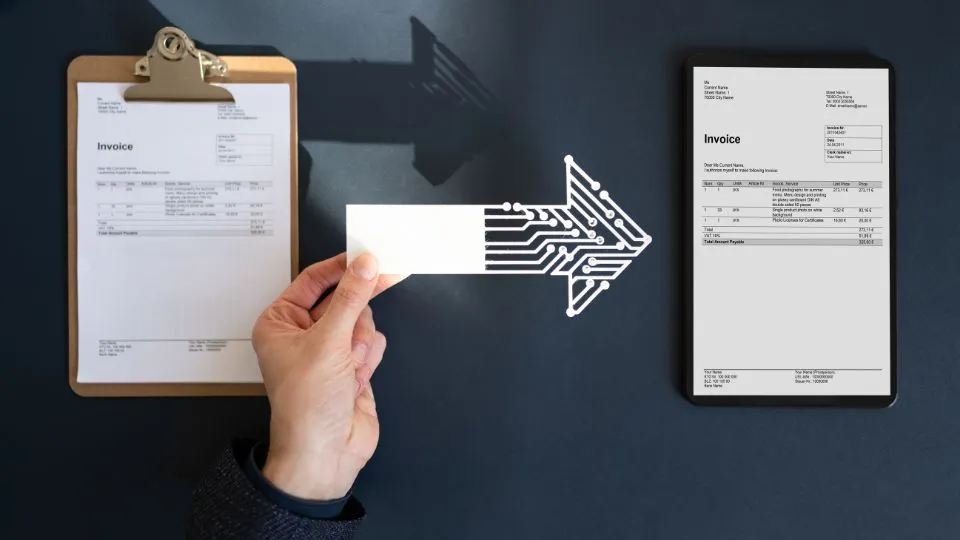Are you searching for freight forwarding software for your business? If so, you’ve just arrived at the right place.
A digital freight forwarding solution can not only save time but also allow you to scale your business effectively without having to add more staff. It is the way to go for small and mid-sized forwarding companies who are looking for efficiency while offering better customer service.
That being said, there are plenty of freight forwarding software available in the market. And it can be quite confusing to figure out the one that’s right for your business.
Here is the truth of the matter. Before you set your eyes on freight forwarding software, it is important to be aware of what to look for in the solution.
That’s exactly what this guide is all about. In this article, you will discover what to look for, and the exact steps to identify the perfect freight forwarding solution for your business.
First, let’s understand what freight forwarding software is.
What is Freight Forwarding Software?

Freight forwarding software is a digital tool that helps freight forwarders efficiently manage their logistics processes. It allows you to handle shipments, track cargo, manage customs documentation, coordinate with carriers, and provide real-time visibility of shipments to your customers – all from a single unified user interface.
Now as exciting as it may sound, the road to choose the right system isn’t straightforward. First, you need to get clear about why you need freight management software in the first place.
Why is Freight Management Software Needed?
Freight management software is an important aspect of today’s complex shipping and logistics environment.
It is somewhat similar to the idea of Accounting Software. Only 2 decades ago, we didn’t imagine a life where we couldn’t do without accounting software. Today, it is just an essential part of managing accounts and finances for any business.
Likewise, freight forwarding software is becoming a mandatory part of a freight forwarding company’s daily operations.
Due to rising complexities in international regulations, the availability of diverse transportation options, and the demanding nature of the freight forwarding business, adopting a freight forwarding technology has become even more important.
At the same time, freight forwarding software streamlines your freight forwarding operations and makes it more efficient for everyone.
Here are a few more advantages of a freight forwarding software:
- Your customers gain real-time visibility of shipments resulting in a better service experience.
- You can automate your documentation and ensure centralized access
- It helps you communicate seamlessly with all parties involved in the shipping process thereby saving a lot of time and stress
- It improves efficiency and reduces human errors, giving you greater peace of mind.
Without further ado, let us look at some of the key features you need to consider while choosing a freight forwarding software.
Key Features of Freight Forwarding Software

A freight forwarding software can offer a multitude of options and it can get quite confusing.
You want to make sure of the features that are important for your business. Things that could make a big difference in your growth, profitability, and customer happiness.
So, we have identified the key features that you need to consider before you venture out to evaluate the solutions.
1. Real-time tracking and visibility
At SeaRates ERP, this is the #1 feature asked for by the freight forwarding companies we work with.
This feature essentially helps in tracking shipments in real-time, besides offering updated information on cargo movement. When your customer gets clear visibility of shipments with estimated arrival times, they become happier and you get peace of mind. Isn’t that a win-win?
2. Automated documentation and compliance management
Storing and keeping all essential documents in one place is a feature you simply can’t ignore. It makes your entire business so much more organized. We’re talking about documents like bills of lading, commercial invoices, and customs declarations all in one central location.
Moreover, such centrally organized documents will minimize errors and help you stay compliant.
3. Rate management and quotation tools
Imagine creating quotes for your customers in minutes instead of hours.
A freight forwarding software can generate accurate quotes very quickly and with high degrees of accuracy because you’re not scrambling for rates all the time.
You have central access to up-to-date carrier rates, surcharges, and other costs.
In fact, a software like SeaRates ERP allows you to compare different modes of transportation and other routing options upfront. So you can predict and recommend the most efficient routes and storage options.
That way, you’re not only offering your clients a cost-efficient option, but you’re also winning their admiration for doing it quickly.
4. Customer Relationship Management (CRM) integration
A CRM is a must-have when it comes to Freight Management Software. CRM keeps track of previous conversions and manages client relationships.
CRM is the centralized source of client information, communication, and interactions. It also helps you identify opportunities, boost customer retention, and offer a better service experience.
5. Analytics and reporting capabilities
Data is the heartbeat of your freight forwarding business. Analytics and reporting feature allows you to gain meaningful insights from your data so you make better decisions.
For example, you can identify which routes will be more convenient, your average profit per shipment, and other key areas for cost optimization.
These insights are invaluable to grow your business without guesswork.
6. Financial management and invoicing
This feature is obviously very important and it can be one of the key benefits of using such a system. You can greatly streamline your financial information and accurately manage financial data all in one place.
Not only that. You can generate an invoice or billing with just one click of a button. You can also manage currency conversion and see profit margins across all your shipments.
7. Integrations with carriers and other logistics platforms
Integrations allow the freight forwarding software to communicate with third-party software such as carriers’ systems and logistics platforms.
This feature offers easy access to automated booking processes and real-time data exchange, which in turn provides a smooth information flow across the supply chain.
Now that you have developed a basic understanding of the key features, let us have a quick glance at the factors to consider in your decision-making.
Factors to Consider When Choosing Freight Forwarding Software

Before choosing a freight forwarding software, here are some key factors to keep in mind:
1. Flexibility and Scalability
The freight forwarding software should be able to handle any quantity of shipments, users, and customers. The software should easily accommodate your increased workload and business growth, without compromising the overall performance.
2. User-friendliness
A user-friendly software has a direct impact on staff productivity and adoption rates. Choose software that reduces your training time while ensuring that all team members easily understand its usage.
3. Customization Options
Every freight forwarding business has its unique workflow and requirements. Make sure the software you choose can be customized as per your specific logistic requirements. It should also provide tools for personalized reporting and analytics that match your day-to-day processes.
4. Customer Support
Good customer support ensures that all operational issues are resolved quickly.
Make sure that the software vendor offers ongoing support and training so that you can tackle any issue without delays.
How to Choose the Best Freight Forwarding Software

With the information we have about the top freight forwarding software, here are four easy steps to choosing the right one for you.
Step 1: Determine Your Must-Haves
Not all features are going to be used by your business, right from the start.
So depending on your business size, growth plans, and budget, choose a software that supports your core needs.
If you are a small Freight Forwarder who is just starting out, some of the most important features you must consider are – quotations, CRM, and shipment tracking.
SeaRates ERP really shines in this area due to its comprehensive quote management and CRM feature.
Step 2: Analyze Costs, Usability and Support
Software features alone do not translate into business value.
Make sure that the software vendor provides excellent customer support and ongoing guidance to help you succeed.
Talk to their existing customers and find out more about their customer support.
Step 3: Evaluate the Product
Take a product demo to get a first-hand understanding of the product. Then you can start with a trial period or small-scale implementation to gain first-hand experience with the software.
Get feedback and alignment from your team before you go ahead with a full-blown implementation.
Step 4: Implementation and Rollout
Implementing a new system can seem daunting. The good news is you can make it easier.
You can start with one department and then proceed with the next.
For instance, you can implement CRM with a quotation management system first, so your sales process is streamlined. That way you won’t feel overwhelmed and make good progress.
Conclusion
Implementing the right freight forwarding software in your business can significantly improve your efficiency and boost customer service. However, the road is not going to be laden with roses.
You need to weigh your options and choose a vendor that offers best-in-class customer service and product experience.
If you are a small freight forwarder, SeaRates ERP is one of the best solutions due to its well-rounded product features and rave reviews from customers. If you’re ready to reap the benefits of freight forwarding software, book a free demo of SeaRates ERP today.
Frequently Asked Questions
1. What is the best freight forwarding software for small businesses?
For small and mid-sized businesses, cloud-based solutions like SeaRates ERP can be an excellent choice for their top-notch scalability and comprehensive features. It provides the most balanced solution for small businesses, offering:
- The right mix of features without overwhelming complexity
- Room for growth and scalability
- Strong customer support and training resources
- Competitive pricing structure
- Regular updates and improvements
2. What are the benefits of cloud-based freight forwarding software?
Cloud-based solutions offer several benefits including improved accessibility, automatic updates, scalability, and lower IT infrastructure costs.
One of the primary benefits of choosing a cloud-based freight forwarding software like SeaRates ERP is that it offers 24/7 customer support and training resources.
To know more, book a demo or contact us.
3. How can digital freight forwarding software improve customer experience?
Digital freight forwarding software can improve customer experience by offering real-time shipment tracking, online booking options, self-service portals, and improved communication channels.








